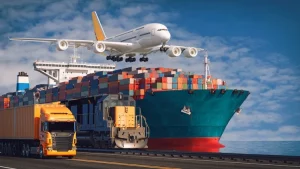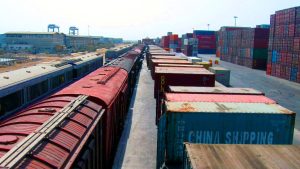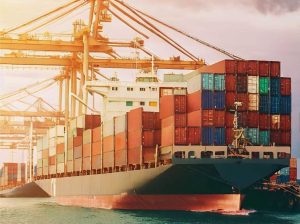فهرست مطالب
ToggleTransit in CIS: Optimizing Logistics Across the Commonwealth
The Commonwealth of Independent States (CIS) is a regional organization made up of former Soviet republics. These countries are interconnected through both historical ties and a complex network of trade and transit routes. As global trade expands, the efficiency of logistics and transit systems within the CIS has become increasingly important for fostering economic growth, enhancing regional integration, and improving global competitiveness. In this article, we will explore how optimizing transit in CIS can play a key role in transforming logistics operations across the region, while also addressing common questions about this vital aspect of international trade.

The Importance of Transit in CIS
Transit in CIS has always played a crucial role due to the region’s strategic location between Europe and Asia. It is a bridge for trade flows between the two continents, serving as a corridor for goods traveling through Russia, Kazakhstan, Belarus, and other member states. Efficient transit systems can significantly reduce transportation costs, time delays, and potential risks associated with moving goods.
The logistics infrastructure in CIS countries is diverse, ranging from road and rail networks to ports and airports. The challenge lies in optimizing these networks for seamless, intermodal connectivity. As a result, improving transit systems within the CIS is vital to supporting regional trade agreements and boosting economic cooperation among member states.
Key Aspects and Optimization Strategies for Transit in CIS
Here is a table summarizing key aspects of Transit in CIS and strategies for optimizing logistics:
| Aspect | Description | Optimizing Strategy |
|---|---|---|
| Technological Gaps | Many logistics operations still use outdated systems. | Adopt modern technologies like GPS tracking, blockchain, and automated cargo handling. |
| Air Transport | Air cargo services are growing but require better infrastructure and connections. | Enhance cargo handling, improve air-to-land transport connectivity, and modernize airports. |
| Geopolitical Tensions | Political disputes may disrupt transit and trade between certain CIS countries. | Enhance diplomatic relations and create unified trade policies to mitigate disruptions. |
| Customs Procedures | Delays due to inefficient border controls and complex paperwork. | Implement digital customs systems, integrate electronic data interchange (EDI), and establish one-stop customs stations. |
| Sea Ports and Shipping | Ports in Russia, Kazakhstan, and Ukraine need modernization to handle growing trade. | Improve cargo handling facilities, streamline customs procedures, and integrate with rail and road networks. |
| Road Networks | Some regions have poorly maintained roads that cause delays. | Invest in constructing new highways and repairing existing roads, improve border crossings. |
| Infrastructure Limitations | Outdated railways, roads, ports, and airports across certain regions. | Invest in upgrading railways, roads, and ports. Improve intermodal connectivity. |
| Rail Transport | Rail is a vital part of CIS logistics, but many rail networks need modernization. | Upgrade rail networks, invest in high-speed rail, and improve safety measures. |
This table highlights the main issues affecting transit in CIS and provides a brief summary of the strategies that can optimize logistics in the region.
Key Challenges in Transit within the CIS
There are several factors that affect the efficiency of transit in CIS countries. These challenges include:
- Infrastructure Limitations: While there have been significant improvements in CIS transit infrastructure, many regions still face issues such as outdated railways, inadequate road networks, and underdeveloped ports.
- Customs and Border Procedures: The movement of goods between CIS countries is often hindered by inefficient customs procedures and border control. These bureaucratic barriers can delay shipments and increase costs.
- Geopolitical Tensions: Political instability and disputes between certain CIS countries can create disruptions in logistics flows and complicate transit operations.
- Technological Gaps: Many transit operations in CIS countries still rely on outdated systems. Modernizing logistics technology to enhance tracking, communication, and data exchange remains a critical challenge.
- Environmental Factors: Harsh weather conditions, especially in northern regions, can impact transportation schedules and increase the risk of delays or accidents.
Optimizing Logistics: Solutions for Improved Transit in CIS
To overcome these challenges, several strategies can be employed to optimize logistics and improve transit efficiency within the CIS.
1. Upgrading Infrastructure
The most immediate solution for improving transit in CIS is the modernization of transportation infrastructure. Investment in upgrading railways, roads, and ports will help streamline operations and facilitate faster movement of goods. For example, high-speed railways and upgraded highways can reduce travel time and fuel consumption, while modern port facilities can increase the volume of goods handled more efficiently.
2. Simplifying Customs Procedures
Improving customs procedures is essential to reducing delays at borders. Implementing standardized, digital customs processes and integrating electronic data interchange (EDI) systems across the CIS can ensure faster clearance times. Additionally, establishing one-stop customs stations where multiple procedures can be completed in a single location will reduce bottlenecks.
3. Enhancing Intermodal Connectivity
A major aspect of optimizing transit in CIS is enhancing intermodal transport connections. This involves creating seamless linkages between rail, road, sea, and air transport networks. For example, efficient transshipment hubs can serve as points where cargo is easily transferred between different transport modes, speeding up the delivery process.
4. Leveraging Technology
Advancements in technology, such as the use of blockchain for secure and transparent transactions, GPS tracking for real-time monitoring, and automated systems for cargo handling, can significantly improve the logistics landscape within the CIS. These innovations will reduce human errors, enhance security, and provide greater visibility into the movement of goods.
5. Strengthening Regional Cooperation
The CIS countries need to collaborate more effectively to create a unified transit policy. Cooperation between governments, logistics providers, and private sectors is essential to building a more cohesive transit network. Joint initiatives can promote shared investments in infrastructure projects, common customs standards, and unified regulatory frameworks that will benefit all member states.
The Role of Railways in CIS Transit
Rail transport has historically been a cornerstone of transit in CIS countries. With vast distances between major cities and industrial hubs, railways offer an efficient way to move goods across the region. Several transcontinental railway routes, such as the Trans-Siberian Railway, are pivotal for international trade.
However, for railways to become even more competitive in global logistics, further investment is needed to modernize tracks, increase train speeds, and improve safety measures. The development of high-speed rail corridors within the CIS can significantly reduce travel times and boost economic activity in the region.
Sea Ports and Shipping in CIS
CIS countries with coastlines, including Russia, Kazakhstan, and Ukraine, play a crucial role in global maritime trade. Developing and optimizing sea ports is essential for facilitating the smooth flow of goods into and out of the region. Ports like St. Petersburg in Russia and Odessa in Ukraine serve as key gateways for European and Asian trade.
Improving the efficiency of these ports requires modern cargo handling facilities, better integration with rail and road networks, and the adoption of smart port technologies. Additionally, reducing bureaucratic red tape at ports can help speed up the movement of goods and make CIS ports more attractive to international shipping companies.

Road Networks and Interregional Connectivity
Road transport is vital for both domestic and international logistics within the CIS. A well-maintained road network allows goods to travel quickly and directly to their destinations. However, the condition of roads in certain CIS regions is suboptimal, which can lead to delays and higher maintenance costs for transport companies.
In order to optimize road transport, governments must prioritize investments in infrastructure projects, including the construction of new highways and the repair of existing roads. Additionally, improving border crossings and ensuring smooth customs procedures will reduce transit time for trucks traveling between CIS countries.
Air Transport and Its Growing Importance
Air transport in CIS countries has become increasingly important, especially for high-value and time-sensitive goods. Major airports such as Moscow’s Sheremetyevo and Almaty’s international airport serve as key hubs for both passenger and cargo flights.
Air cargo services can benefit from improvements in cargo handling facilities, more efficient customs processing, and better connections to rail and road networks. By enhancing air transport infrastructure, CIS countries can further improve their position in global trade and logistics.
Frequently Asked Questions
What is the significance of transit in CIS countries?
Transit in CIS is vital for connecting Europe and Asia, facilitating regional trade, and enhancing economic cooperation among member states.
What are the key challenges in CIS transit?
Challenges include infrastructure limitations, inefficient customs procedures, geopolitical tensions, and outdated technology.
How can infrastructure be improved for better transit in CIS?
Upgrading railways, roads, ports, and airports, as well as enhancing intermodal connectivity, can significantly improve logistics efficiency.
Why is rail transport so important in CIS?
Rail transport offers an efficient, cost-effective way to move goods across vast distances, especially in regions like Russia and Kazakhstan.
How can customs procedures be optimized in CIS?
Streamlining customs with digital processes, electronic data interchange (EDI), and one-stop customs stations can speed up the clearance of goods.
What role does technology play in optimizing transit in CIS?
Technology such as GPS tracking, blockchain, and automated cargo handling can enhance security, reduce errors, and provide real-time visibility.
All Videos
Conclusion
Optimizing transit in CIS countries is a complex yet necessary endeavor to improve logistics efficiency and foster greater economic cooperation within the region. By addressing infrastructure limitations, simplifying customs processes, and leveraging technology, the CIS can enhance its role as a critical hub for global trade. Continued investment in transportation systems, coupled with stronger regional cooperation, will pave the way for a more integrated and prosperous logistics landscape. As a key player in this transformation, Jahan tarabr Abrisham Transport Company has significant potential for driving meaningful improvements and can contribute to the region’s economic growth and logistical advancement.




